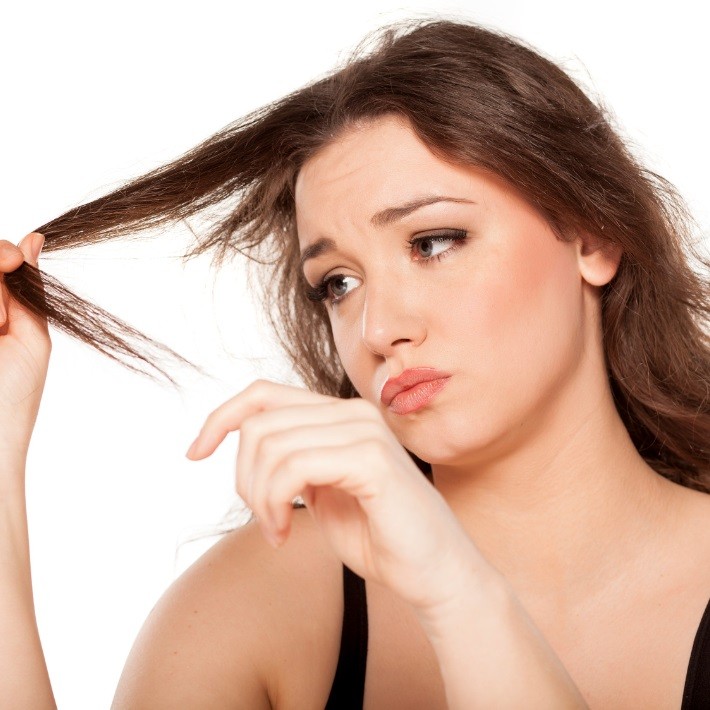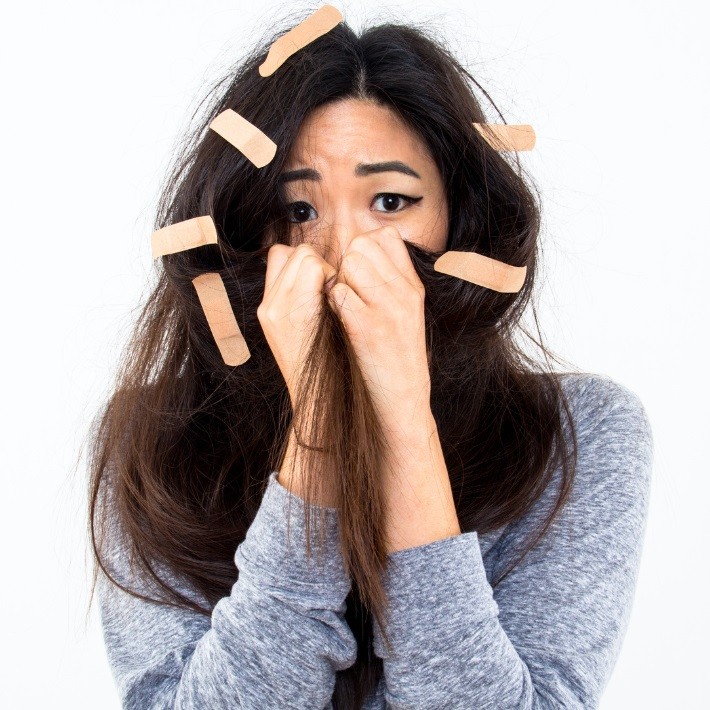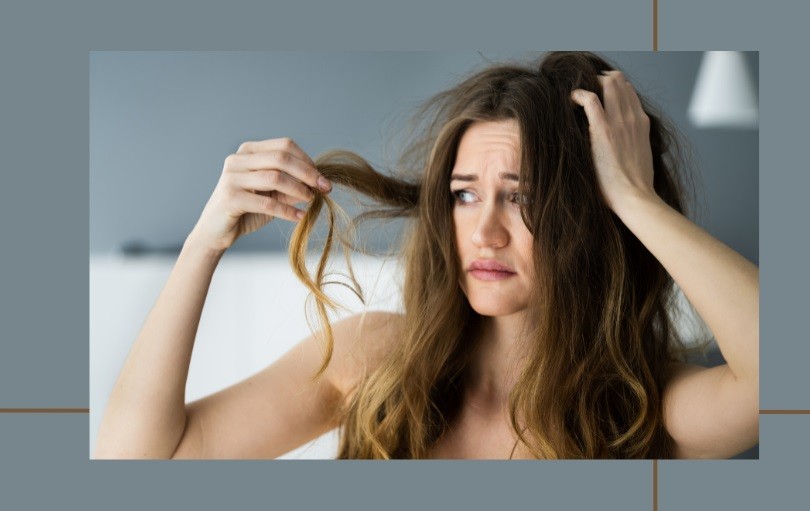Last Updated on July 6, 2025
In today’s fast-paced world, it’s easy to neglect our hair while focusing on our busy schedules. However, ignoring our hair’s needs can lead to damage that may go unnoticed. So, what does damaged hair look like? In this article, we’ll explore the signs of damaged hair, its causes, and how to treat and prevent it. We’ll also cover some frequently asked questions and provide expert tips for maintaining healthy locks.
What Does Damaged Hair Look Like?

Damaged hair can manifest in various ways, including split ends, dryness, frizz, and breakage. In this section, we’ll discuss the most common signs of hair damage and their possible causes.
Related: What Does Brassy Hair Look Like?
Dry and Brittle Hair
When hair lacks moisture, it can become dry and brittle. This can be caused by overwashing, using harsh shampoos, or exposure to harsh weather conditions.
Split Ends
Split ends occur when the protective outer layer of the hair shaft becomes damaged, causing the hair to split. Heat styling, chemical treatments, and mechanical stress can all contribute to split ends.
Frizziness
Frizzy hair is often a sign of damage caused by dehydration or a lack of natural oils. Humidity, overprocessing, and using the wrong hair products can exacerbate frizziness.
Breakage
Hair breakage is often a result of weakened strands due to damage. Causes can include excessive heat styling, chemical treatments, and rough handling of the hair.
Lack of Shine
Healthy hair has a natural shine that reflects light. Damaged hair, on the other hand, may appear dull and lifeless due to a lack of moisture and essential oils.
Color Fading
Hair that’s been color-treated is more susceptible to damage, and color fading can be an indication that your hair needs some TLC.
Related: Why Does My Hair Feel Like Straw?
Identifying the Culprits Behind Damaged Hair
Now that we know what damaged hair looks like, it’s essential to understand the factors that contribute to hair damage. This will allow us to make informed decisions about hair care and prevent further damage.
Overprocessing
Chemical treatments, such as coloring, perming, and relaxing, can weaken the hair shaft and make it more susceptible to damage. It’s crucial to space out these treatments and use professional products to minimize damage.
Heat Styling
Frequent use of heat-styling tools, such as hairdryers, curling irons, and flat irons, can cause significant hair damage. When possible, opt for heat-free styling methods and use heat-protectant products.
Harsh Hair Care Products
Some hair care products contain harsh chemicals that can strip the hair of its natural oils, leading to dryness and damage. Choose gentle, sulfate-free shampoos and conditioners to maintain your hair’s health.
Poor Diet
A nutrient-poor diet can negatively impact hair health. Make sure to consume a balanced diet rich in vitamins, minerals, and healthy fats to support strong, healthy hair.
Environmental Factors
Exposure to UV rays, pollution, and extreme temperatures can damage your hair. Protect your locks by wearing a hat and using products with UV protection.
Related: How Rare Is Strawberry Blonde Hair?
Treating Damaged Hair: Top Tips for Reviving Your Locks

If your hair is showing signs of damage, it’s time to give it some extra care. Here are some tips to help you restore your hair to its former glory.
Trim Regularly
Getting regular trims will help to remove split ends and promote healthy hair growth. Aim to trim your hair every 6-8 weeks.
Deep Conditioning Treatments
Invest in a high-quality deep conditioning treatment to provide your hair with much-needed moisture and nutrients. Use it once a week for best results.
Limit Heat Styling
As mentioned earlier, heat styling can be damaging to your hair. Try to limit your use of heat styling tools and always use a heat protectant spray when necessary.
Use Gentle Hair Care Products
Opt for sulfate-free shampoos and conditioners, as well as hair care products specifically designed for damaged hair. This will help to restore your hair’s health without causing further harm.
Protect Your Hair From the Elements
Wear a hat to shield your hair from the sun’s harmful rays and consider using a leave-in conditioner with UV protection. Also, avoid exposing your hair to chlorinated water or saltwater without proper protection.
Frequently Asked Questions About Damaged Hair
In this section, we’ll address some common questions about damaged hair to help you better understand and care for your locks.
How can I tell if my hair is damaged?
Damaged hair may exhibit several signs, such as dryness, brittleness, split ends, frizziness, breakage, lack of shine, and color fading.
Can damaged hair be repaired?
While it’s impossible to completely reverse hair damage, you can take steps to improve your hair’s health and appearance. Regular trims, deep conditioning treatments, and using gentle hair care products can help restore your hair’s vitality.
How long does it take for damaged hair to recover?
The recovery time for damaged hair varies depending on the severity of the damage and the steps taken to treat it. Generally, it can take anywhere from a few weeks to several months for noticeable improvement.
How can I prevent hair damage?
To prevent hair damage, avoid overprocessing, limit heat styling, use gentle hair care products, maintain a balanced diet, and protect your hair from environmental factors.
Is it okay to color damaged hair?
Coloring damaged hair can further weaken the hair shaft and exacerbate existing damage. It’s best to wait until your hair has recovered before considering any chemical treatments.
Can a poor diet contribute to damaged hair?
Yes, a nutrient-poor diet can negatively impact hair health. Ensure you consume a balanced diet rich in vitamins, minerals, and healthy fats to support strong, healthy hair.
Conclusion
Understanding what damaged hair looks like and its underlying causes can help you take steps to prevent and treat damage. By following our expert tips and advice, you can revive your locks and maintain healthy, beautiful hair. Remember, it’s never too late to start giving your hair the care it deserves.

